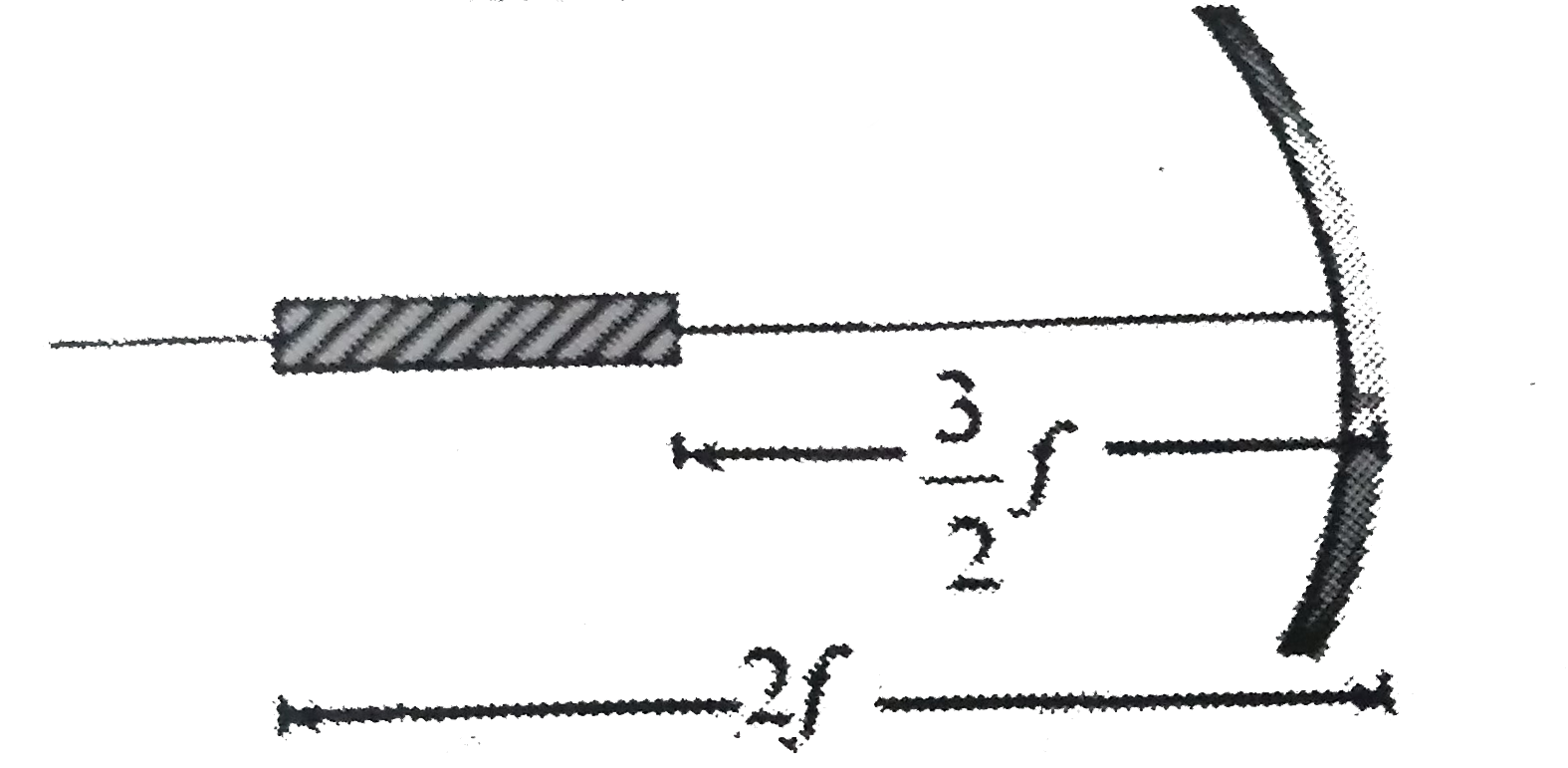A ball swings back and forth in front of a concave mirror. The motion of the ball is described approximately by the equation x=fcos(ω)t, where f is the focal length of the mirror and x is measured along the axis of mirror. The origin is taken at the centre of curvature of the mirror.
(a) Derive an expression for the distance from the mirror of the image of the swinging ball.
(b) At what point does the ball appear to coincide with its image?
(c) What will be the lateral magnifiaction of the image of the ball at time t=T2, where T is time period of oscillation?

The correct Answer is:A, B, C, D
A(a) Att=t,
u=−(2f+x)
=−(2f+fcos(ω)t)
Using the mirror formula,
1v+1u=1f
We have,
(1v)−12f+fcos(ω)t=−1f
∴v=−(2+cos(ω)t1+cos(ω)t)f
i.e distance of image from mirror at time t is
(2+cos(ω)t1+cos(ω)t)f
(b) Ball coincides with its image at centre of curvature, i.e. at x=0
(c) At t=T/2
or, (ω)t=(π),x=−f
i.e. u=−f or ball is at focus. so its image is at (∝)
m=(∝).
Topper's Solved these Questions
- REFLECTION OF LIGHTBook:DC PANDEY ENGLISHChapter:REFLECTION OF LIGHTExercise:Level 2 Comprehensive Based
Explore 4 Videos
- RAY OPTICSBook:DC PANDEY ENGLISHChapter:RAY OPTICSExercise:Medical entrance gallary
Explore 76 Videos
- REFRACTION OF LIGHTBook:DC PANDEY ENGLISHChapter:REFRACTION OF LIGHTExercise:Level 2 Subjective
Explore 21 Videos
Similar Questions
Focal length of a concave mirror is
View SolutionThe focal length of a concave mirror is 10 cm. Find its radius of curvature.
View SolutionA 10mm long awl pin is placed vertically in front of a concave mirror. A 5mm long image of the awl pin is formed at 30cm in front of the mirror. The focal length of this mirror is
View SolutionWhat is the focal length of a concave mirror of radius of curvature 16.0 cm?
View SolutionAn object is placed in front of a concave mirror at a distance of 7.5 cm from it. If the real image is formed at a distance of 30 cm from the mirror, find the focal length of the mirror. What would be the focal length if the image is virtual.
View SolutionA concave mirror forms a virtual image of size twice that of the object placed at a distance 5 cm from it . Find the focal length of the mirror.
View SolutionA linear object is placed along the axis of a mirror as shown in figure. If 'f' is the focal length of the mirror then the length of image is-

View SolutionDraw ray diagrams showing the image formation by a concave mirror when an object is placed
(a) between pole and focus of the mirror , (b) between focus and centre of curvature of the mirror
(c) at centre of curvature of the mirror , (d) a little beyond centre of curvature of the mirror
(e) at infinity
View SolutionAn object is placed in front of a concave mirror between the pole and the focus of the mirror. What is the nature of the image formed by the mirror ?
View SolutionA convex mirror forms an image one-fourth the size of the object. If object is at a distance of 0.5 m from the mirror the focal length of the mirror is
View Solution

